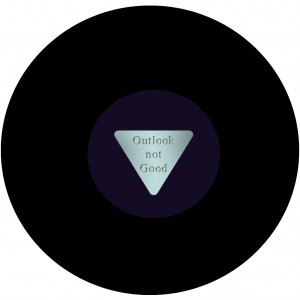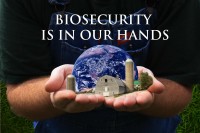 In a highly contagious disease event, our official response personnel would be behind a very large 8-ball because the disease moves ahead of our ability to detect it. Everyone needs to recognize that the moment a case of foot-and-mouth disease was confirmed, more would be incubating. It can take days to weeks for signs to be recognized and reported. In some animals, like sheep, signs may be minimal. Disease may go unnoticed and inadvertently spread to other susceptible livestock.
In a highly contagious disease event, our official response personnel would be behind a very large 8-ball because the disease moves ahead of our ability to detect it. Everyone needs to recognize that the moment a case of foot-and-mouth disease was confirmed, more would be incubating. It can take days to weeks for signs to be recognized and reported. In some animals, like sheep, signs may be minimal. Disease may go unnoticed and inadvertently spread to other susceptible livestock.
Farms will be affected by the official response whether they are part of an eradication campaign, a vaccination campaign, or a changing landscape of movement restrictions and biosecurity requirements. Even farms far outside of the “hot zone” would be affected due to loss of export markets and possibly other product markets.
If people assume because there is a plan that they will be taken care of, they may be in for a surprise. Dr. Steve Van Wie, biosecurity consultant on the AFRI biosecurity project, has done some investigation of the indemnity rules that would apply. The value of livestock culled in a disease emergency would be determined based on market value. How do you think markets would respond to a case of FMD? (Here’s a hint: the beef industry is estimated to have lost over $3 billion (3 followed by 9 zeroes) in 2004 following the discovery of a case of bovine spongiform encephalopathy (aka Mad Cow Disease) in Washington state in December 2003.) OK, different disease. FMD doesn’t make people sick. But do people know that? (See previous post.)
Our project, rather than duplicating previous and ongoing efforts, complements those by identifying and working to fill gaps in preparedness. Farmers, by and large, don’t have plans for what to do in the event of a disease disaster and their communities don’t have plans for how to support local farmers. Filling those gaps is the crux of our project.


I had the opportunity recently to discuss animal disease emergency response issues with Dr. John Clifford, Deputy Administrator and Chief Veterinary Officer of USDA’s Animal and Plant Health Inspection Service’s Veterinary Services. Dr. Clifford provides leadership for APHIS’s mission of safeguarding US animal health. He wanted to make it very clear that the value assigned to animals being taken in a disease emergency situation would be based on an appraisal of market values prior to that event. The value would not be based on market conditions at that moment. However, he noted that the appraised value of animals as the event continued would not necessarily be constant. In conversations with farmers conducted as part of the AFRI biosecurity project in Vermont, we are hearing farmers wanting to be treated fairly in the event of a highly contagious disease emergency. Future conversations are needed to clarify what farmers would view as “fairness” so this can be communicated clearly to policy makers.